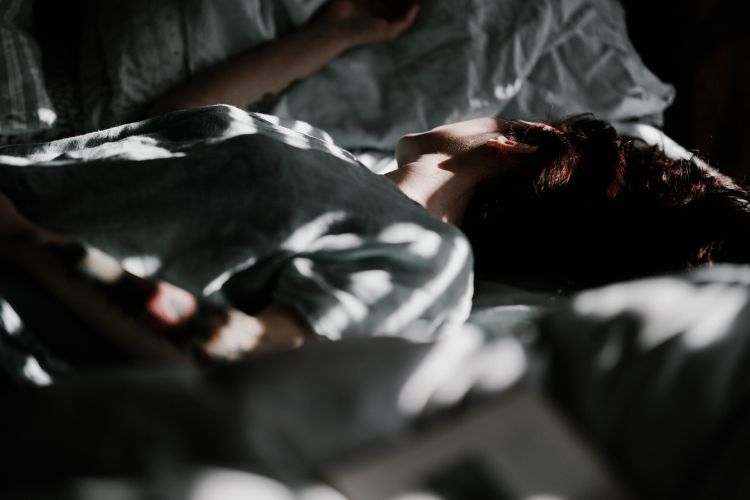Life with Endometriosis
One in 10 women in the UK suffers with the debilitating condition so why does diagnosis take so long?

For most women, their period is never exactly going to be the highlight of their month. Period pain and general discomfort plague us for a few days each month but for many women, awaiting their period fills them with dread and anxiety. This is because they’re suffering with a gynaecological disease called endometriosis.
Endometriosis occurs when tissue similar to the inner lining of the womb (endometrium) is found elsewhere in the body - usually in the pelvis around the womb, ovaries and fallopian tubes. “These cells respond to the hormones produced by the ovaries each month and so also bleed when you have your period. There is, however, no way for this blood to leave the body,” says Professor Nick Raine-Fenning, a consultant gynaecologist and spokesperson for the Royal College of Obstetricians and Gynaecologists (RCOG). As a result, many women experience excruciating period pains, pain during sex, heavy periods and severe cases can even result in infertility.
The condition has recently made headlines with Girls writer and actress Lena Dunham revealing that she had taken the serious step of undergoing a hysterectomy at 32 years-old in an attempt to manage the pain. Pop singer Halsey has also revealed the struggles she has faced as a result of the disease including miscarrying while on stage. Despite the condition making headlines recently, it takes on average 7.5 years for women to receive a diagnosis from the onset of their symptoms.
"I woke up in searing agony"
"The very first day was carnage. I knew straight away that something wrong because surely there shouldn’t have been this much blood on my first period. It was like the prom scene in Carrie,” says Chloe Magill, 22 from Belfast. “The pain gradually got more severe with each period. By the time I was 15 years-old, I was having to go home sick from school because I was throwing up in the toilets.”
Chloe isn’t alone in her experience. It’s believed that one in 10 women of reproductive age in the UK currently suffers with endometriosis, and it affects approximately 176 million women worldwide. While it’s not exactly a rare condition, it’s one that remains difficult to diagnose.
Molly Arnold’s symptoms came out of the blue one day when she was 16 years-old. Molly, now 23 from Manchester says, “I woke up in searing agony. I couldn't move. I was being sick, fainting, curling over. I was screaming the house down.”
After being rushed to hospital with suspected appendicitis and several tests later, the doctor discharged her and revealed she had endometriosis - a condition she has never even heard of. When she returned home, she had to search online to find out more information.
Prior to being diagnosed, Molly sought medical advice multiple times and doctors put the pain down to Irritable Bowel Syndrome (IBS), her appendix and one even said it’s just what women have to deal with.
For Katie Pickard, 26 from Leeds, the worst part of her symptoms was the excruciating pain she felt during and after sex. “I would have to lie on the bathroom floor to cool down and to stop throwing up as the pain was giving me hot flushes,” says Katie.
Endometriosis is the second most common gynaecological condition in the UK but it’s often misdiagnosed due to doctors misunderstanding of the pain. When meeting with her doctor initially, Katie says, “I explained all my symptoms and the doctor was flummoxed to say the least. In the second appointment the doctor said she had no idea and she even asked other doctors who were also none the wiser.”

No progress or slow progress?
In March 2017, the All-Party Parliamentary Group (APPG) on Women’s Health released a report confirming that women around the country are not being treated appropriately for their physical, mental and gynaecological issues. The report also found that 40% of women with endometriosis had to visit their GP 10 times or more before being referred to a gynaecology specialist.
Speaking to The Debrief, Emma Cox, CEO of Endometriosis UK says that despite the negative findings of the report, it also highlights just how simple it can be to educate and raise awareness for women’s health issues.
As a result, new guidelines by the National Institute for Health and Care Excellence (NICE) have been released aiming save women from years of unnecessary suffering by reducing diagnosis time and urging doctors take possible endometriosis symptoms seriously.
While endometriosis presents a very real problem for many women, diagnosis can be slow. Speaking to The Independent, GP Dr Zoe Norris who works in the Hull and East Yorkshire area says that the process of diagnosis means that she has to look at the worst case scenario first and then look at the most common condition it could be and rule them out with blood tests, internal swabs and scans.
She says, “It’s very similar to ovarian cancer in the way that the presentation can be completely different to what you think it’s going to be. Diagnoses can take a long-time to make and in that time you’ve got a woman in serious pain.”
Through the keyhole
As well as the physical pain caused by endometriosis, some women suffering from the condition have found that the debilitating nature of the disease also affects their mental health. Chloe says, “I felt hopeless and terrified of leaving my house during my period. I would rarely leave my room and pray that it would come on a weekend so I wouldn't have to walk around school, terrified of leaking or vomiting. I developed anxiety, that I hadn't had to the same degree before, stopped socialising as much and stopped playing sports.”
Chloe was officially diagnosed when she was 20 years-old having been finally referred to a gynaecologist at 18 and five years after she had initially sought advice from a doctor. She had started taking the pill during this time which helped to regulate the pain and made her periods feel normal. While the gynaecologist didn’t think that Chloe was likely to have endometriosis as tests showed no signs of the disease, she was offered a laparoscopy - a type of keyhole surgery that makes endometriosis diagnosis easier.
“After being on the pill for two years, my symptoms were next to nothing so I had started to doubt myself. I told the doctors and nurses that the pill had worked wonders so maybe I didn't have endometriosis after all,” says Chloe. “They hesitated for a moment before sending me into surgery anyway. I felt so guilty for wasting their time before going under.”
When she woke up after surgery, the doctor confirmed what Chloe herself had known since she was eighteen. “He confirmed it was endometriosis and it was actually at stage four. It was so severe that it had wrapped around my ovaries, bowel and uterus which made it risky to operate on,” she says. “I was just so angry. I was crying for days, I was just furious at every health care professional that failed me for five years.”
While Chloe’s story is just one experience of endometriosis, the lengthy waiting times for diagnosis is a common trend and one that the new guidelines hope to tackle. Professor Mark Baker, Director of the Centre for Guidelines at NICE says, “the condition is difficult to diagnose as symptoms vary and are often unspecific. However, once it has been diagnosed, there are effective treatments available that can ease women’s symptoms. This guideline will help healthcare professionals detect endometriosis early, to close the symptom to diagnosis gap and to ensure more timely treatment.”
Charlie Hart is a blogger and journalist. You can find more from me at itscharliehart.com.


